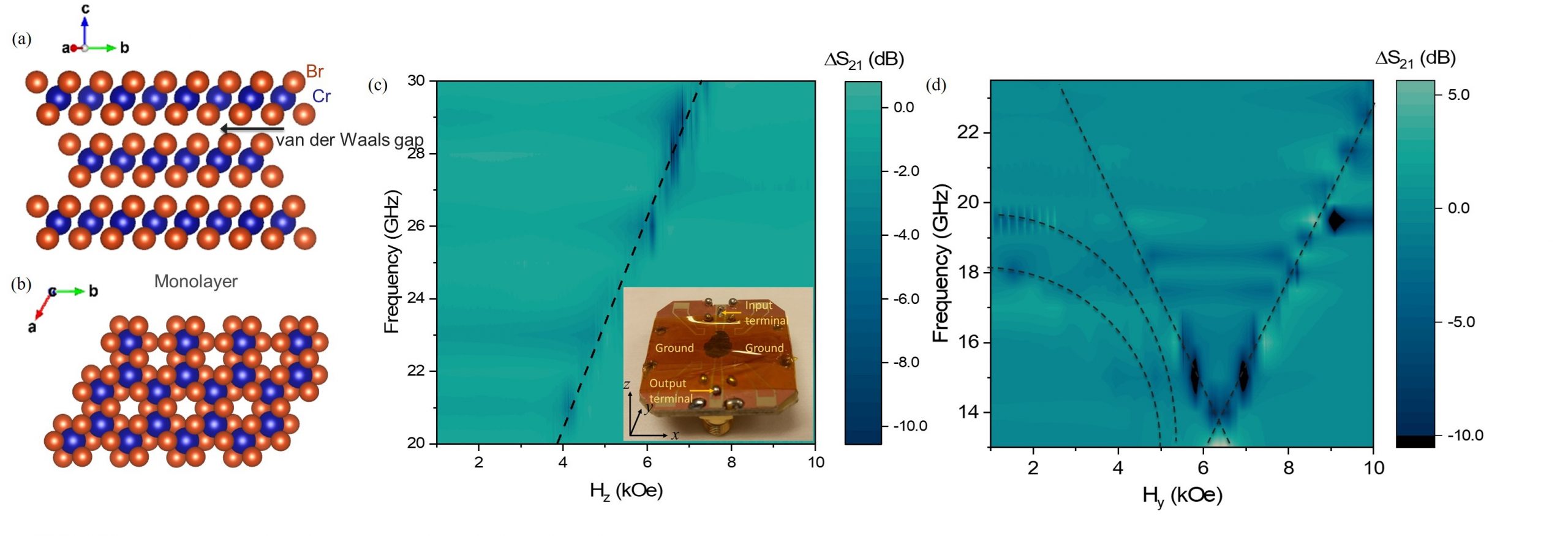THz source using antiferromagnetic materials
The resonance frequency of the antiferromagnetic materials are in the THz range due to the strong exchange field of the antiparallelly oriented spins. Recent progress in the modulation of electrical manipulation and detection of the antiferromagnetic materials open up a path for accessing their ultrafast dynamics. The material of my interest is the FeRh. This antiferromagnetic metallic alloy show uniaxial magnetoresistance in the proximity of high spin-orbit interaction materials. Recently, we have observed that with the increase in the input current, the magnetoresistance changes nonlinearly. This observation led us to an exciting experiment of auto-oscillation where a DC current though this material onset its ultrafast dynamics. The realization of the THz oscillation will revolutionize the THz communications.
Publication: S. Siddiqui, J. Sklenar, K. Kang, M. Gilbert, A. Schleife, N. Mason, and A. Hoffmann, Metallic antiferromagnets, J. of Appl. Phys. 128, 040904 (2020) (Featured).
Antiferromagnetic dynamics in layered materials
Spin dynamics in magnetic materials is of interest for a range of applications including embedded memory and logic-in-memory computation. Layered magnetic materials, because of their unique crystal structures and weak interlayer coupling, give rise to unconventional spin dynamics and electrically accessible resonance frequencies even for antiferromagnets. Towards this end, we investigated the rich spin dynamics in a layered CrBr3 crystal using magnetic resonance phenomena. Compared to the other chromium trihalides (i.e., CrX3, X = Cl, I), CrBr3 possesses unique magnetic properties such as strong ferromagnetic intralayer exchange interaction and weaker interlayer ferromagnetic coupling due to competing ferromagnetic and antiferromagnetic exchange interactions at low temperature. With the out-of-plane magnetic field, we only observe one resonance mode (Kittle mode). However, we have identified three different modes in the CrBr3 crystal when the applied field is in-plane. The origin of different modes can be identified using micromagnetics including different anisotropy and intralayer and interlayer exchange energies. Our study shows that broadband microwave transmission spectroscopy can reveal the intricate spin dynamics phenomena in layered magnetic materials that originate from the interplay of intralayer and interlayer exchange energies.

Publication: S. Siddiqui et al., Complex spin dynamics in layered CrBr3, Magnetism and Magnetic Materials Conference (MMM) 2020.